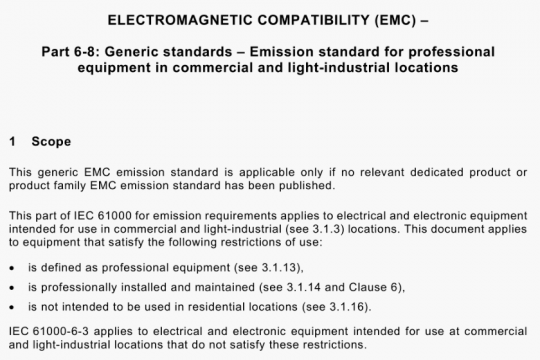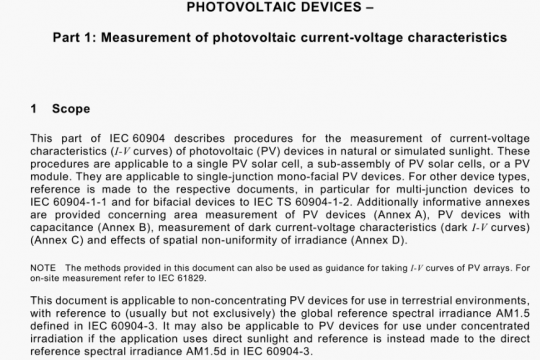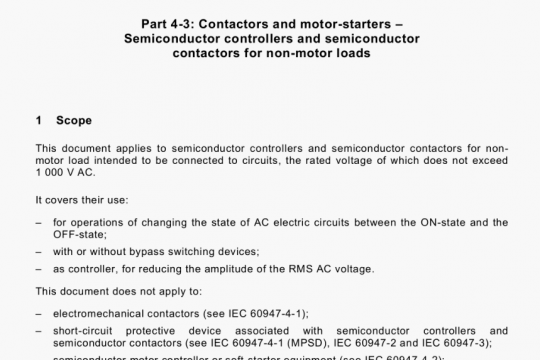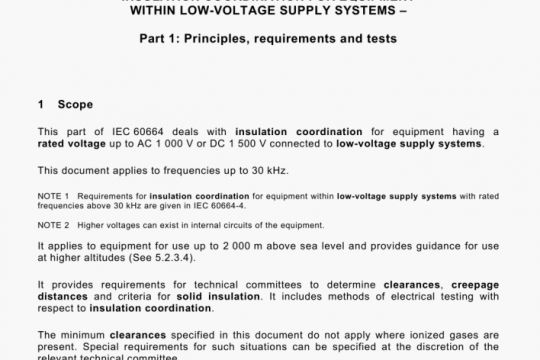IEC 60034-4-1-2018 pdf download
IEC 60034-4-1-2018 pdf download.Rotating electrical machines – Part 4-1: Methods for determining electrically excited synchronous machine quantities from tests.
6.3 Direct-current winding resistance measurements
The resistance shall be measured according to IEC 60034-2-1.
The winding temperature during the measurements should be determined by means of built-in
or embedded temperature detectors where fitted.
6.4 No-load saturation test
6.4.1 Test procedure
The no-load saturation test is conducted:
a) driving the test machine as a generator by some prime-mover; or
b) running the machine under test as a motor without shaft load from a source of alternating symmetrical three-phase voltage (for symmetry of voltage, see 7.2 of IEC 60034-1:2017); or
c) during retardation of the machine under test.
When making the no-load test, excitation changes should be made in gradual steps from high to low voltage using evenly distributed points; if possible, from the voltage value corresponding to the excitation at rated load, but not below 1,3 of the rated voltage of the machine under test, down to 0,2 of its rated voltage, unless the residual voltage is higher.
For machines with ratings equal and above 10 MVA, the voltage should be limited to 1,2 rated voltage.
Measure the residual voltage of the generator when the excitation current is decreased to zero.
It is preferred to conduct test a) with a DC calibrated prime-mover or a torquemeter, as it also permits the no-load losses to be determined during the test.
When using test b), it is also necessary to measure armature current. At each voltage step, readings shall be recorded for minimum armature current that corresponds to unity power- factor.
When using test c), the rate of deceleration should not exceed 0,04 of the rated speed per second. However, when the machine under test has a rate of deceleration above 0,02 rated speed per second, excitation from a separate source is required in order to have more stable excitation during the test. Before disconnecting from the line, the machine is excited to the highest required value, but not below 1,3 of the rated voltage of the machine. The excitation is lowered in steps and at each step, readings of speed (frequency) are taken simultaneously with constant excitation current. The retardation test shall be repeated to obtain all the steps required.
Record simultaneously:
— excitation current;
— line voltage;
— frequency (or speed);
— for test b), minimum armature current that corresponds to unity power-factor;
— for test c), armature voltage.
This test is not applicable for permanent magnet machines.IEC 60034-4-1 pdf download.




